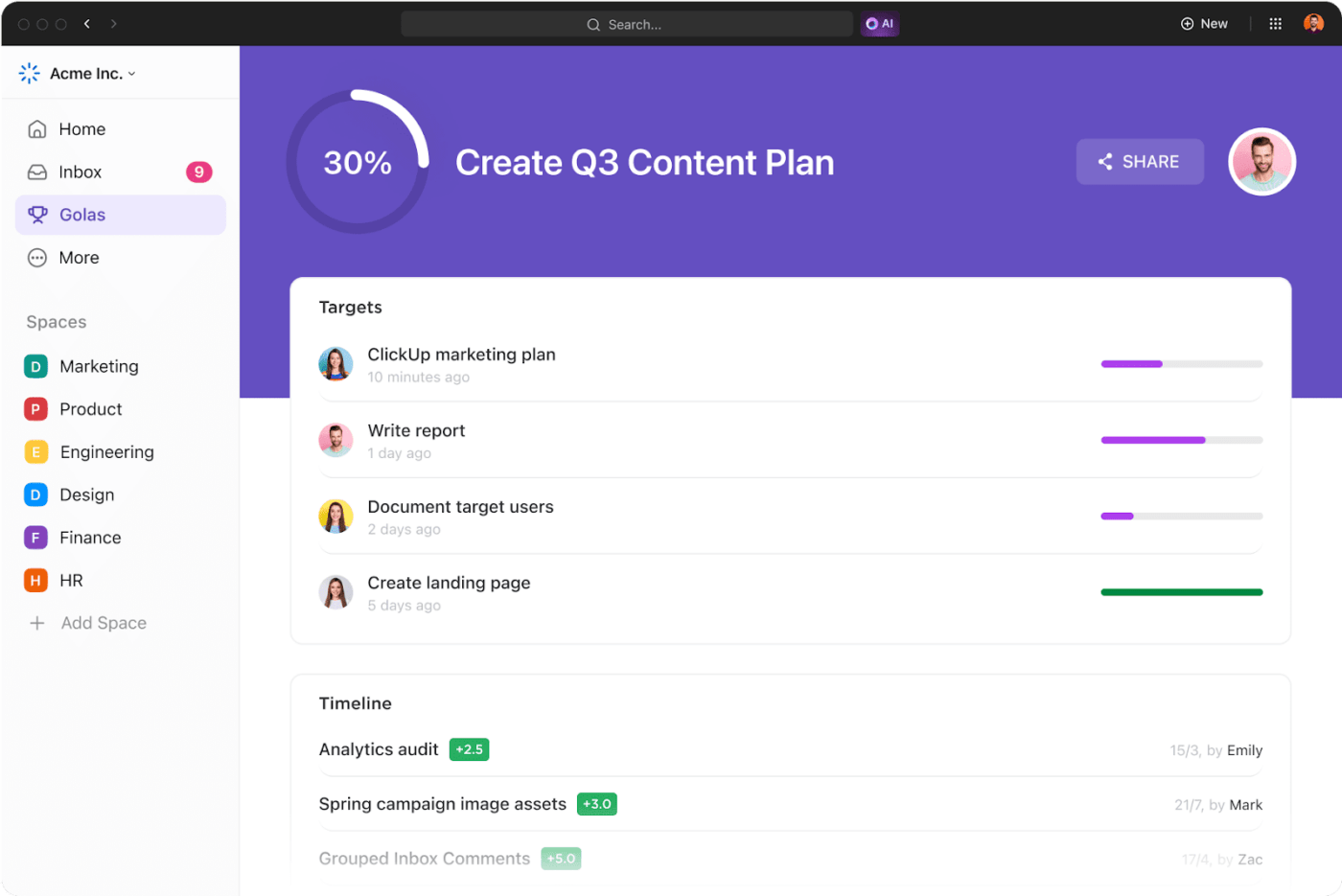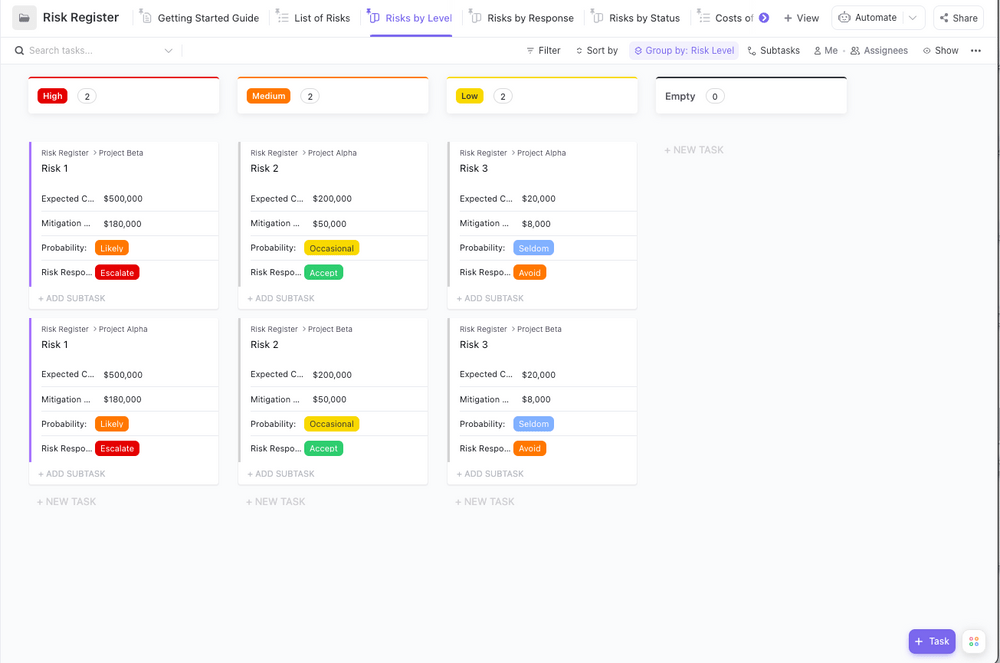

Employees need more than just a good paycheck from a job. So, what do they really want?
For most employees, a paycheck alone isn’t the only factor motivating them to bring their best selves to work. A deep sense of purpose, meaningful conversations, and, perhaps most importantly, a good manager are just as important.
As a manager, you want to do right by your team so that they are engaged and can achieve their goals. That is why you must set clear expectations and communicate effectively to build an agile and resilient workforce.
Let’s break down everything you need to know about setting manager expectations to unlock the full potential of your workforce.
Why is Setting Manager Expectations Important?
Setting clear expectations in the workplace is extremely important to ensure a sense of purpose, direction, and success.
With clear expectations of goals and key performance metrics, all team members understand what success looks like, which prevents confusion or miscommunication.
Most importantly, it leads to greater accountability, which unlocks a productive and efficient workforce. This ensures that all projects are completed without delay and according to the KPIs set for success.
How to Set Manager Expectations?
Now that we know that setting manager expectations is important, how do we set them up? Here are four useful tips to help you:
1. Establish clear and specific goals
Start with clear communication to set expectations. The SMART goal framework is a commonly used method for managers to establish clear goals for project management.
But what is a SMART goal?
They are defined as Specific, Measurable, Achievable, Relevant, and Time-bound. This means that every project goal needs to include what needs to be accomplished, how to track progress, whether it is realistic and attainable, whether it aligns with the individual’s job responsibilities and company objectives, and finally, has a deadline.
A good example of a SMART goal could be: to create a training program that reduces time spent on customer service by 10% within 3 months.

2. Communicate clearly with your team
To set clear expectations with your team, skip the jargon and get to the point. Short yet clear instructions can communicate your point better. It helps teams absorb the necessary information to work on their tasks.
Clear goals vs. unclear goals (examples from a Marketing POV)
Clear goal: Increase website signups by 20% within the next quarter
This goal is specific (20%), measurable (website signups), achievable (within a quarter), relevant (important for marketing), and time-bound (next quarter)
Unclear goal: Generate more brand awareness
- It doesn’t specify a measurable outcome. “More” is subjective
- It lacks a specific metric. Brand awareness can be measured in many ways (e.g., social media mentions, website visits)
- It doesn’t have a quantifiable target. How much “more” awareness is desired?
- It lacks a timeframe. When should this be achieved?
You should also ensure consistent updates via meetings, emails, or quick check-ins so everybody stays in the loop.

3. Match expectations with metrics and feedback
However, after establishing goals and communication, the final step of setting expectations is perhaps the most important: connecting expectations to metrics and feedback.
Your team members need to understand how their performance will be evaluated. The metrics need to be objective, measurable, and clearly defined. If possible, incorporate 360-degree evaluation questions from their peers, customers, and you to understand how they performed.
This survey can easily be launched through ClickUp’s Feedback Form Template, which can help create a platform for voicing concerns and opinions. Your team members can gather valuable insight about their work ethic, performance, and social skills through these completely customizable forms equipped with data analysis and insights.
As we’ve established, there’s more to being a manager than delegating tasks. Key takeaways from Camille Fournier’s The Manager’s Path can break it down for you!
Top 10 Expectations of a Good Manager
Now that we’ve understood how to set manager expectations, we’ll break down the top 10 expectations of a good manager
1. Build effective communication strategies
You need to identify and regulate communication channels for all project discussions. But the truth is, long meetings for project updates can be a waste of time, while communications tend to get missed on different channels, like Slack, email, etc.
By centralizing communication using ClickUp features like @mentions or assigned comments, you can send and receive messages within the context of a task. Use Watchers and Assignees to keep your key stakeholders informed about the conversations.

Moreover, aim to create a comprehensive communication plan that outlines the strategies and objectives for internal and external communication within your organization.
A good plan must include the target audience, types of messages, how to communicate them, and how often to communicate. The more comprehensive the plan is, the better it will be for your project’s success.
Communication plan templates like the ClickUp Communication Plan Template are built with plenty of sections where you get specific about project details, objectives, executive summary, analysis, research, and competitor analysis. It ensures that all important information is on one centralized document.
2. Recognize your high-performers
Underappreciated employees are more likely to get frustrated if they aren’t recognized. It should come as no surprise that 80% of employees would work harder, maybe even smarter, if appreciated.
We all enjoy being appreciated for our work. Recognition at the workplace inspires your team to perform to the best of their abilities and reinforces desired behavior. This can also help in employee retention and increase revenue and productivity.
3. Foster a strong workplace culture
A strong workplace culture is the backbone of any successful business. It can help unite employees, build trust and motivation, and create a unique identity.
But this can be tricky. That’s where ClickUp’s Company Culture Template comes in! It is an easy-to-use, customizable template that can help you visualize and align your team around what matters, prioritize initiatives for cultural growth, and, most importantly, increase unity among teammates.
4. Level up your project management processes
As a manager (even a first-time manager), you’ll have multiple projects with various teams under you. It is best to establish strong processes and systems to make work more organized and efficient for yourself and your team members.
Tools like work plan templates provide specific goals that help you organize, plan, communicate, and prioritize work. They can include sections like project goals and objectives, performance indicators, time frames, resource allocation, etc.
5. Delegate tasks transparently
Everyone on your team needs to know what they’re expected to do and when they’re expected to do it. Delegating tasks effectively is the crux of efficient workload management–one of your main goals as a manager.
To plan upcoming projects based on your team’s capacity, you can use ClickUp’s Employee Workload Template.
With this template, you can see how much work is assigned to individual contributors. This way, everyone knows what’s expected of them, which prevents burnout, increases transparency, and builds a sense of fairness. Workload monitoring becomes easier through time estimates, sprint points, etc.
This helps to increase efficiency and promote collaboration between departments and teams.
6. Follow through with your commitments
As a manager, you must stick to your promises. Before committing, understand the steps involved and follow through with those steps.
When employees see managers follow through with their commitments, they feel more engaged and connected to the project and team. When a chain of promises is initiated, it establishes trust and credibility, which leads to an organization’s success.
7. Encourage and enable professional growth
Managers significantly influence an employee’s career, and every team member is well aware of it. So, you should actively identify your team’s strengths and weaknesses to assign responsibilities that leverage their capabilities and maximize performance.
With ClickUp’s Career Path Template, you could help team members understand what skills they need to develop to reach their career goals. It could make it easier for you to provide feedback, measure performance etc. Career map templates become a powerful tool to help managers and their team members clearly visualize the progression of their careers.
8. Identify and mitigate risks
A manager should be quick and decisive in addressing risks. You could establish a structured approach to identifying and assessing risks and prioritizing effective mitigation strategies. More importantly, you should train every team member to be intuitive and communicate risks proactively.
Templates like ClickUp’s Risk Register Template can help identify risks before they become issues. It could also help you organize risk assessments and track risk status, ownership, and impacts in one place.
9. Provide strong leadership and direction
Leadership vs. Management is a long-drawn debate, but no one would question whether a good manager must also be a good leader.
Good managers have a vision for the team. Great managers are able to assimilate that vision into actionable plans. They think outside the box to find solutions for problems (if any) and can motivate people with the right messaging and delivery to achieve that vision.

A good leader should have integrity to ensure that no employee is treated unfairly and the flexibility to adapt to situations as necessary. Great leadership is a combination of effective team management and practice, and only after this do good managers become great leaders.
10. Respect personal boundaries
Your team is your strength, and it’s important to honor their boundaries regarding their time, personal life, and physical space.
Your team members should feel comfortable approaching you with work-related concerns without worrying that their personal lives are under unnecessary scrutiny. This helps create a professional space where employees feel valued and respected solely for their contributions.
Most importantly, to be a good manager, you should promote a healthy work-life balance, which enables your team members to recharge outside of work.
How to Meet Expectations as a Manager?
Being a manager can be daunting, but every team relies on an attentive manager to guide them in achieving organizational goals wholeheartedly. Here are some tips to help keep you sharp and proactive.
- Stay updated: Know the business well. Closely follow the changes in your industry and embrace new innovations that you can use to help your team’s work efficiency
- Put the team first: Determine what best serves your team. Your team will put more faith in your decisions if you can factor their needs into your decision-making
- Master time management: Learn to set deadlines that balance business priorities with your team’s capabilities. Plan projects well in advance to avoid any last-minute scrambling
- Enhance those motivational skills: Boost team morale by exploring fresh approaches to inspire them toward achieving collective goals
Manage Your Team Better with ClickUp
Being a manager can be overwhelming, as you must manage multiple expectations between your team and upper management. But you don’t have to do this alone. A platform like ClickUp lets you execute your responsibilities optimally and with maximum transparency.
ClickUp eliminates the need to track and follow up on a million things manually, freeing you up to focus fully on developing your team. Hot tip? Familiarize yourself with different tools, techniques, and templates to optimize your responsibilities effectively.
ClickUp can be your all-in-one platform to nail communication and project management requirements simultaneously. Sign up on ClickUp for free and transform how you manage your teams!









